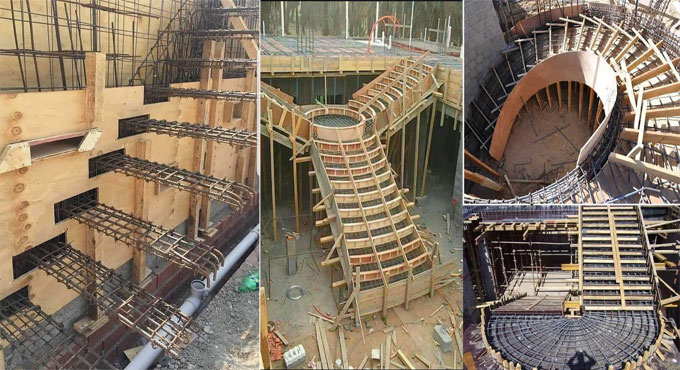NEWS | SOFTWARE | SHEET
Useful information about Staircase and their details
Stairs are utilized to form a walking path amid various upright points through separating the elevation amid the points into convenient steps. Quite often, the term “stairs” pertains to a staircase, while the term “step” applies to the specific steps that form the staircase.
Furthermore, the major parts of the stairs are described underneath:
Stairs, mainly in internal space, could even comprise protecting to single, or two sides, in the shape of a bannister, i.e., a collection of uprights as well as a guardrail.
Furthermore, stairs could be straight as well as could comprise a landing as well as turn, or could be curved. Moreover, an incessant set of steps amid landings is known as a flight.
Moreover, curved stairs possess tapered treads, as well as could be not easy to utilize. Furthermore, a helical stair possesses a space in the midst, while a spiral stair possesses a column in the midst.
In certain instances, stairs can possess alternating treads, i.e., the large component of the tread is at alternating sides on successive treads. Furthermore, stairs could be built by means of an extensive range of materials, comprising; brick, timber, concrete, stone, glass, metal and so forth.
One can find out in what way to conclude the design with regard to flat slab, waist slab, treads and risers which are imperative components of a staircase.
Furthermore, there are several parts in a staircase which go from riser, tread, stringers, headroom, flight, winders, going or run, hand rail, landing, balusters, slope or pitch, line of nosing, nosing and so forth.
Recommended Articles:
Stair Reinforcement Detailing along with Bar Bending Schedule
Specified underneath, several imperative elements of staircase:
- Landing: Landing width must not be lower than the stairs’ width.
- Width of stairs: Residential: - 220 - 250 mm; Public: - 250 - 300 mm; not lower than 200 mm whatever the case may be.
- Tread: Residential: 220 - 250 mm; Public: 250 - 300 mm; not below 200 mm whatever the case may be.
- Riser: Residential: 150 - 180 mm; Public: 120 - 150 mm; not more than 200 mm whatever the case may be.
- Head Room Clearance: must not be below 2.1 mm
- Pitch: must not be more than 380
- Measurement of Flight: Number of steps must be no less than 3 and maximum 12
Recommended Articles:
Requirements for Good Staircase
Watch the following video to learn the complete process.
Lecturer: Parag Pal
Recommended Articles:
Rebar / Reinforcement for Staircase - Installation of Steel Reinforcement


